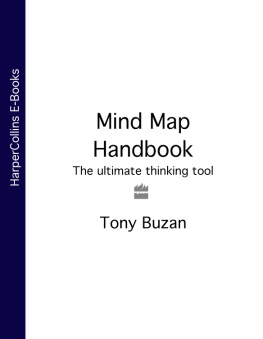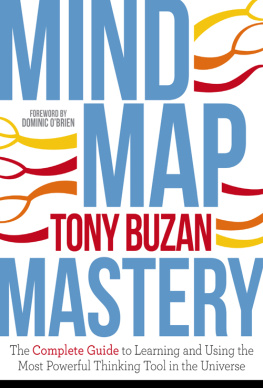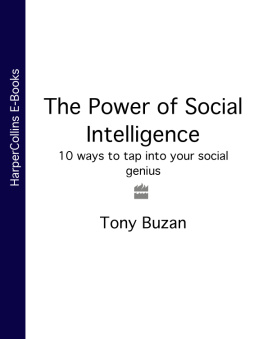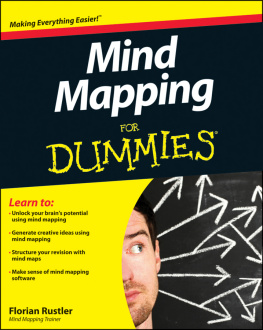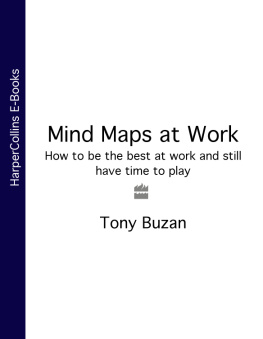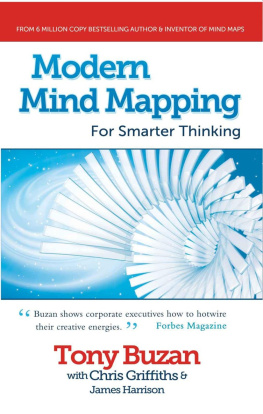Let me tell you the story of how Mind Maps came into being.
As a young child I had loved the idea of taking notes and of learning. By the time I was a teenager my thinking was already getting into a mess, and I began to hate anything to do with study, especially note-taking. I began to notice the extraordinary paradox that the more notes I took the worse my studies and memory became. In an effort to improve matters I began to underline key words and ideas in red and to put important things in boxes. Magically, my memory began to improve.
In my first year of university, I was still struggling. It was then that I became fascinated by the Greeks, for I learned that they had developed memory systems that enabled them to recall perfectly hundreds and thousands of facts. The Greek memory systems were based on Imagination and Association, which I noticed to my amusement and concern were absent from my own notes!
I then began to notice that everyone around me was taking the same kind of crowded, one-colour and monotonous notes as I was. None of us was using the principles of Imagination and Association we were all in the same sinking boat!
I suddenly realized that in my head and the collective global brain, there was a gigantic log-jam that needed a new note-taking and thinking tool to unblock it.
I set out in search of a thinking tool that would give us the freedom to think and the freedom to think in the way we were designed to think.
I began to study every subject I could, especially psychology. In psychology I discovered that there were two main things important to the brain during learning: Association and Imagination. Similar to the Greeks! By now I was becoming fascinated by my brain and what I realized were its power and potential. The power and potential were both much greater than I had thought. I began to focus on memory, note-taking and creativity, as it seemed that the answer to my quest would lie with them.
I quickly discovered that most of the great thinkers, especially Leonardo da Vinci, used pictures, codes and connecting lines in their notes. They doodled and thus made their notes come alive.
During all these explorations, I would often wander in nature, where I found it much easier to think, imagine and dream. It began to dawn on me that, as we are part of nature, our thinking and note-making must relate to nature and must reflect nature; we must mirror the universal laws of nature in our own functioning!
There was only one possible solution to my dilemma. The thinking tool had to apply to the full range of human daily activities, and had to be based on the way the brain naturally wants to work. I needed something that reflected the processes of nature and how our brains naturally work rather than something that put us in a mental strait-jacket by forcing us to work against our natural design. What emerged was a star-like, simple, and beautiful tool that did reflect the natural creativity and radiance of our thinking processes.
The first Mind Map was born!
The British Broadcasting Corporation (BBC) heard about this new discovery and about its remarkable effect on children. As a result they asked me to do a half-an-hour television program on Mind Maps.
At the meeting to discuss the content of the program, I Mind Mapped the brain-storming session. Looking at the growing Mind Map, the Head of BBC Further Education exclaimed: Theres more than one programme here. There are at least ten! Within a year the Use Your Head ten-part television series and accompanying book were launched. The Mind Map had created its own future!
Since then I have devoted my time to lecturing and teaching about the theory and application of Mind Maps. Having struggled through my student days, I was determined that everyone should have the benefit of this liberating thinking tool.
Mind Map Handbook is part of this determination to make Mind Maps accessible to everyone.
Part One introduces you to what a Mind Map is, how Mind Maps work and the many ways in which they can help you excel at what you do.
Part Two focuses on how to use Mind Maps to harness the power of your verbal intelligence and become brilliant with words whether you are reading, speaking, remembering or understanding them.
Part Three shows you how Mind Maps can help you unlock your creative genius and become the ideas person youve always wanted to be. Mind Maps are the Swiss Army Knife for the brain, and with them you will sharpen your powers of thought and be able to generate new ideas with speed and ease.
Mind Maps wonderfully and dramatically changed my life for the better. I know that they will do the same for you.
Be prepared to be amazed by yourself!

1.1
Introducing The Mind Map
In this chapter I will answer the following questions:
- Just What Is a Mind Map?
- What Do You Need to Make a Mind Map?
- How Can Mind Maps Help You?
Just What Is a Mind Map?
A Mind Map is the ultimate organizational thinking tool. And it is so simple!
The very basic Mind Map below is a plan for today. Each of the branches emanating from the central image relate to different things that need to be done today, for example, calling a plumber, or doing the grocery shopping.
A Mind Map is the easiest way to put information into your brain and to take information out of your brain its a creative and effective means of note-taking that literally maps out your thoughts.
All Mind Maps have some things in common. They all use colour. They all have a natural structure that radiates from the centre. And they all use lines, symbols, words and images according to a set of simple, basic, natural and brain-friendly rules. With a Mind Map, a long list of boring information can be turned into a colourful, memorable, highly organized diagram that works in line with your brains natural way of doing things.

You can usefully compare Mind Maps to maps of a city. The centre of your Mind Map is like the centre of the city, and represents your most important idea; the main roads leading from the centre represent the main thoughts in your thinking process; the secondary roads or branches represent your secondary thoughts, and so on. Special images or shapes can represent sights of interest or particularly interesting ideas.
Just like a road map, a Mind Map will:
- Give an overview of a large subject or area.
- Enable you to plan routes or to make choices, and will let you know where you are going and where you have been.
- Gather together large amounts of data in one place.
- Encourage problem solving by allowing you to see new creative pathways.
- Be enjoyable to look at, read, muse over and remember.
Mind Maps are also brilliant route-maps for the memory, allowing you to organize facts and thoughts in such a way that your brains natural way of working is engaged right from the start. This means that remembering and recalling information later is far easier and more reliable than when using traditional note-taking techniques.
What Do You Need to Make a Mind Map?
Because Mind Maps are so easy to do and so natural, the ingredients for your Mind Map Recipe are very few:
- Blank unlined paper

